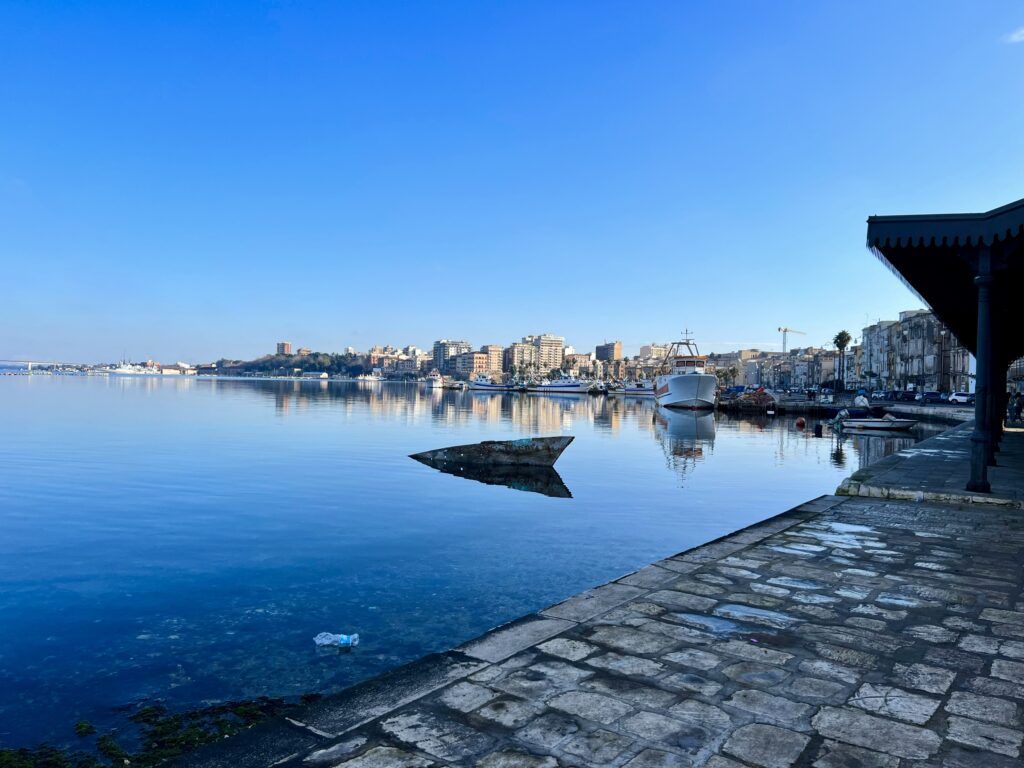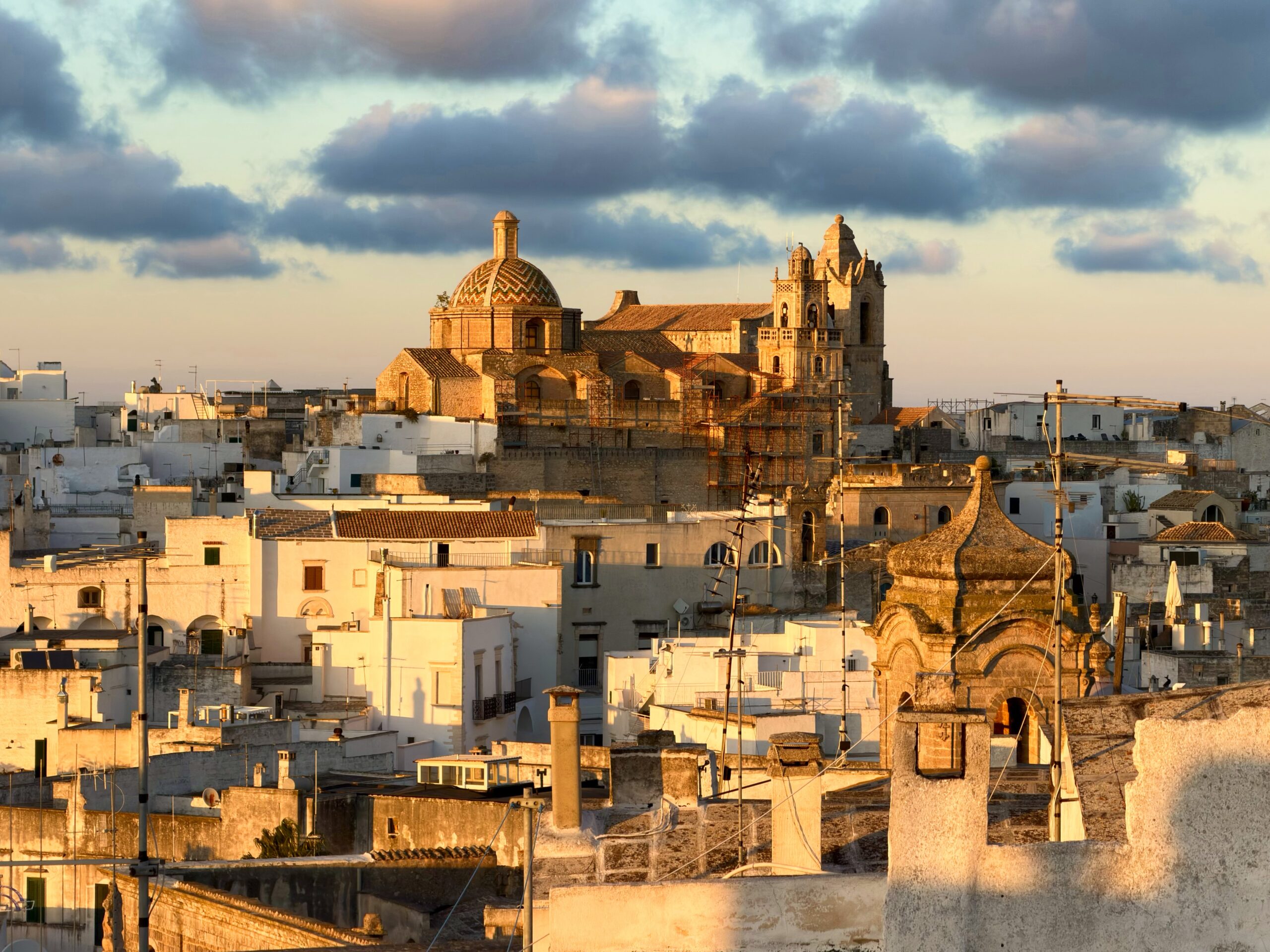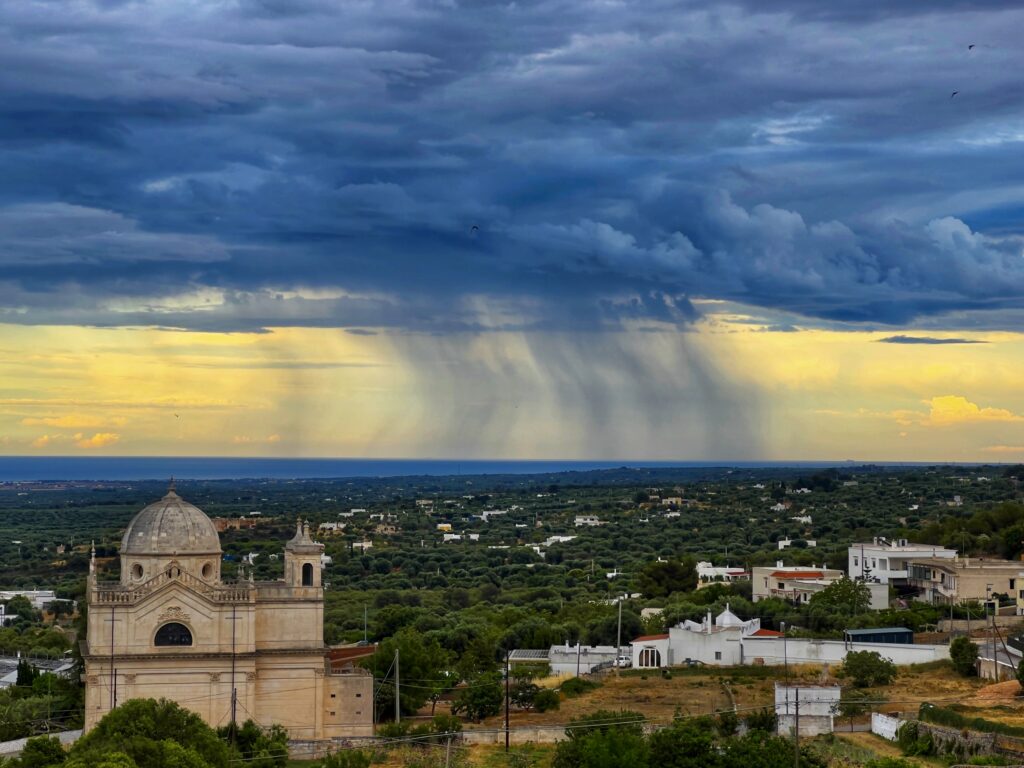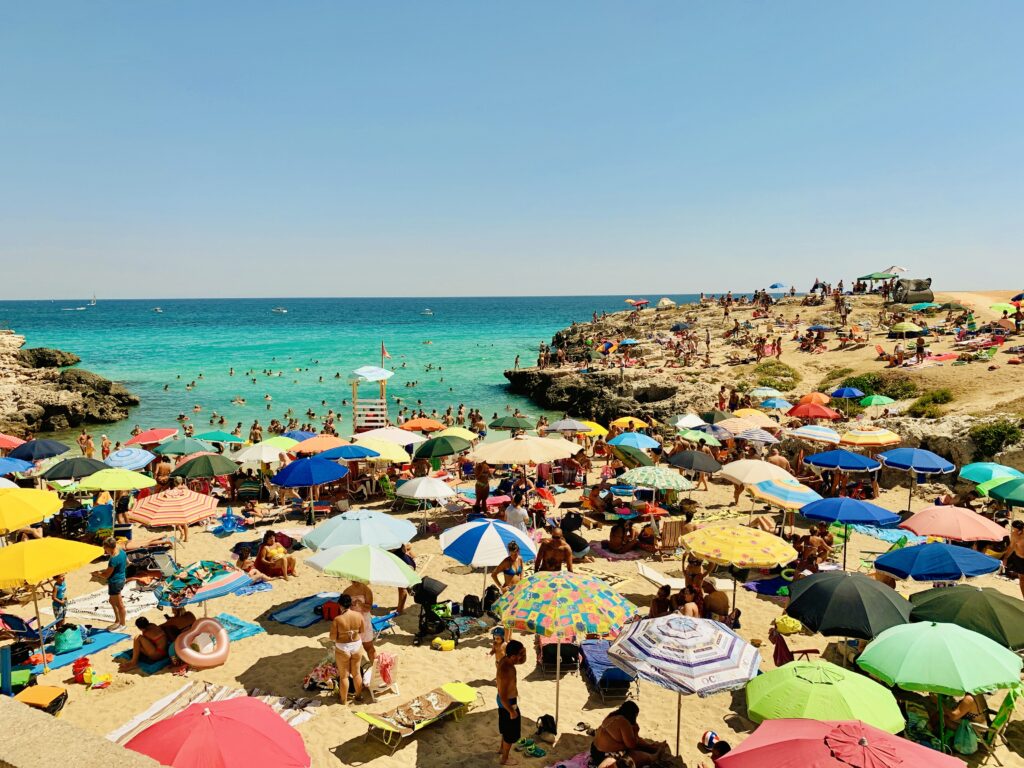Puglia has changed dramatically over the past decade. Once considered Italy’s hidden corner, it’s now firmly established on the international travel map. And as tourism continues to grow, the region is learning how to balance popularity with preservation — welcoming visitors who come not just to see Puglia, but to understand it.
Looking ahead to 2026, Puglia is evolving again. Here’s what travellers can expect from the coming season.
A Record-Breaking Year
Tourism growth in Puglia continues to outpace the national average, confirming the region among Italy’s fastest-growing destinations.
In the first eight months of 2025, Puglia recorded 4.8 million arrivals and 17.5 million overnight stays — up 11.8% and 10.1% respectively compared with the same period in 2024.
The strongest growth has come from international visitors, with arrivals up 23.8% and overnight stays up 22.4%. These figures place Puglia among the most sought-after destinations in the Mediterranean, driven by travellers seeking a blend of coastline, culture and slower rhythms of life.
This growth reflects more than just increased visibility. It shows that Puglia’s identity — its landscapes, food and authenticity — continues to resonate with travellers, even as the region works to preserve what makes it unique.
A Shift Toward Year-Round Travel
For years, Puglia’s tourism followed a predictable rhythm: crowded beaches in July and August, quieter roads by mid-September, and a long winter hibernation. That pattern is finally changing.
The regional tourism authority has made destagionalizzazione — extending the visitor season beyond the traditional summer — a strategic priority. New initiatives promote autumn olive and grape harvests, winter village festivals, and spring hiking and cycling routes when wildflowers cover the countryside.
The message is clear: Puglia is a destination for all seasons. And increasingly, travellers are discovering that the region’s most authentic side is easiest to experience outside the summer rush.
Authenticity Over Aesthetic
The next chapter of Puglia’s tourism story is less about aesthetics and more about substance. After a decade of luxury conversions and masserie turned into boutique resorts, visitors are increasingly drawn to places that reflect the rhythms of real local life.
Many of Puglia’s most interesting new projects are locally owned and community-driven — family-run masserie that still operate as working farms, renovated trulli that welcome guests without stripping away their character, and cooperatives that promote rural crafts, food and heritage.
A growing number of young Puglians are returning home, investing in small-scale hospitality, winemaking and artisanal production. Their aim isn’t to imitate other regions, but to redefine what authentic Puglian hospitality means in the 21st century.
Return Visitors Want to Go Deeper
By 2026, most travellers arriving in Puglia won’t be first-timers. Many are returning for a second or third visit, drawn by the food, the landscape and the sense of calm — but this time looking to explore beyond the highlights.
That means turning away from the most photographed coastal towns toward smaller inland communities such as Carovigno, Grottaglie, and Ceglie Messapica, or venturing north to Gargano and the Daunia Mountains.
These areas are seeing new investment in walking routes, cycling trails and improved public transport connections, reflecting a wider regional shift toward more sustainable, low-impact travel.
The New Meaning of Luxury
In Puglia, the idea of luxury is changing. The next generation of travellers is less interested in five-star resorts or infinity pools overlooking olive groves. The new benchmark is time, space and authenticity.
That might mean staying in a restored farmhouse with only a handful of rooms, dining in a family-run trattoria that doesn’t appear on booking platforms, or joining an olive harvest instead of booking a spa treatment. The focus is shifting away from experiences designed for social media and towards those that foster genuine connection with people and place.
Sustainability Beyond Slogans
Sustainability is moving beyond marketing and becoming a measure of credibility. Local councils and cooperatives are promoting projects that address overtourism, reduce waste, and preserve the region’s historic olive landscapes affected by Xylella.
Expect to see more eco-certifications, improved train and bus connections, and networks linking small producers, cultural sites and rural routes — designed to spread tourism more evenly across the territory.
What It Means for Travellers
For visitors, Puglia’s evolution means more choice, more depth and more opportunity to experience the region as it truly is.
It’s now possible to:
- Take part in an olive harvest in November
- Visit Lecce or Bari in winter, when city life continues uninterrupted by crowds
- Walk the Valle d’Itria or Gargano trails in spring
- Stay in inland masserie that still operate as farms rather than resorts
Puglia in 2026 will feel a little calmer, a little more confident, and a lot more considered. After a record-breaking 2025, the region is learning how to balance growth with identity — and how to welcome travellers who come not only to see it, but to understand it.

La Puglia nel 2026: Il Quadro Generale
Negli ultimi dieci anni la Puglia è cambiata profondamente. Un tempo considerata un angolo nascosto d’Italia, oggi è ormai una delle mete turistiche più conosciute del Paese. Con la crescita del turismo, la regione sta imparando a bilanciare popolarità e autenticità, accogliendo viaggiatori che non vengono solo per vedere la Puglia, ma per comprenderla.
Guardando al 2026, la Puglia continua a evolversi. Ecco cosa aspettarsi dalla prossima stagione.
Un Anno da Record
La crescita turistica in Puglia continua a superare la media nazionale, confermando la regione tra le destinazioni italiane a più forte sviluppo.
Nei primi otto mesi del 2025, la Puglia ha registrato 4,8 milioni di arrivi e 17,5 milioni di presenze, con un aumento rispettivamente dell’11,8% e del 10,1% rispetto allo stesso periodo del 2024.
L’incremento più marcato riguarda i visitatori stranieri, con arrivi in crescita del 23,8% e pernottamenti del 22,4%. Questi dati collocano la Puglia tra le mete più ambite del Mediterraneo, trainata da viaggiatori alla ricerca di mare, cultura e ritmi di vita più lenti.
Questa crescita non è solo questione di numeri: riflette la capacità della Puglia di mantenere intatta la propria identità, pur aprendosi a un turismo sempre più internazionale.
Verso un Turismo Tutto l’Anno
Per anni il turismo pugliese ha seguito un copione prevedibile: spiagge affollate a luglio e agosto, strade più tranquille da settembre, e un lungo letargo invernale. Ora lo scenario sta cambiando.
La Regione Puglia ha fatto della destagionalizzazione una priorità strategica. Nuove iniziative promuovono la raccolta delle olive e dell’uva in autunno, le feste di paese in inverno e i percorsi di trekking e cicloturismo in primavera, quando la campagna è in fiore.
Il messaggio è chiaro: la Puglia è una meta per tutte le stagioni. E sempre più viaggiatori scoprono che il lato più autentico della regione si vive meglio lontano dall’affollamento estivo.
Autenticità al Posto dell’Estetica
La prossima fase del turismo pugliese è meno legata all’estetica e più alla sostanza. Dopo un decennio di ristrutturazioni di lusso e masserie trasformate in resort, i visitatori cercano esperienze più genuine, che rispecchiano i ritmi della vita locale.
Molti dei progetti più interessanti sono a conduzione familiare e radicati nel territorio: masserie che continuano a essere aziende agricole, trulli ristrutturati con rispetto per la tradizione, cooperative che promuovono artigianato, gastronomia e patrimonio culturale.
Un numero crescente di giovani pugliesi sta tornando per investire in piccole attività di ospitalità, produzione di vino e artigianato. L’obiettivo non è imitare altre regioni, ma ridefinire l’ospitalità pugliese nel XXI secolo.
Il Ritorno dei Viaggiatori Esperti
Nel 2026 molti turisti non saranno alla loro prima visita. Sempre più viaggiatori tornano in Puglia per la seconda o terza volta, attratti dal cibo, dal paesaggio e dalla tranquillità — ma desiderosi di scoprire luoghi nuovi.
Questo si traduce in una maggiore attenzione verso le località meno conosciute: Carovigno, Grottaglie, Ceglie Messapica, o le zone più settentrionali del Gargano e dei Monti Dauni.
Qui stanno nascendo nuovi percorsi di cammino, ciclismo e turismo lento, sostenuti da un miglioramento dei collegamenti ferroviari e dei trasporti pubblici. È la prova concreta di una transizione verso un turismo più sostenibile e diffuso.
Un Nuovo Concetto di Lusso
In Puglia il significato di “lusso” sta cambiando. I viaggiatori di nuova generazione sono meno interessati agli hotel a cinque stelle o alle piscine panoramiche e più attratti da tempo, spazio e autenticità.
Il vero lusso può essere un soggiorno in una lamia o trullo restaurato, una cena in una trattoria di paese che non compare su Booking, o la partecipazione alla raccolta delle olive invece di un trattamento spa. L’attenzione si sposta dalle esperienze pensate per i social a quelle capaci di creare un legame autentico con le persone e con il territorio.
Sostenibilità: Dalle Parole ai Fatti
La sostenibilità non è più solo uno slogan, ma un criterio di credibilità. Comuni e cooperative promuovono progetti per contrastare l’overtourism, ridurre i rifiuti e preservare il paesaggio olivicolo minacciato dalla Xylella.
Si moltiplicano le reti territoriali che collegano produttori locali, siti culturali e percorsi rurali, insieme a un miglioramento del trasporto pubblico e a nuove certificazioni ambientali. L’obiettivo è distribuire i flussi turistici in modo più equilibrato e rispettoso del territorio.
Cosa Significa per i Viaggiatori
Per chi visita la Puglia, tutto questo si traduce in un’offerta più ampia, esperienze più autentiche e la possibilità di vivere la regione nella sua quotidianità.
Oggi è possibile:
- Partecipare alla raccolta delle olive a novembre
- Visitare Lecce o Bari d’inverno, quando la vita locale prosegue senza folle
- Percorrere a piedi la Valle d’Itria o il Gargano in primavera
- Soggiornare in masserie che sono ancora vere aziende agricole
Nel 2026 la Puglia sarà una regione più calma, più consapevole e più attenta. Dopo un 2025 da record, sta imparando a bilanciare la crescita con l’identità, accogliendo viaggiatori che non vengono solo per vederla, ma per capirla.



